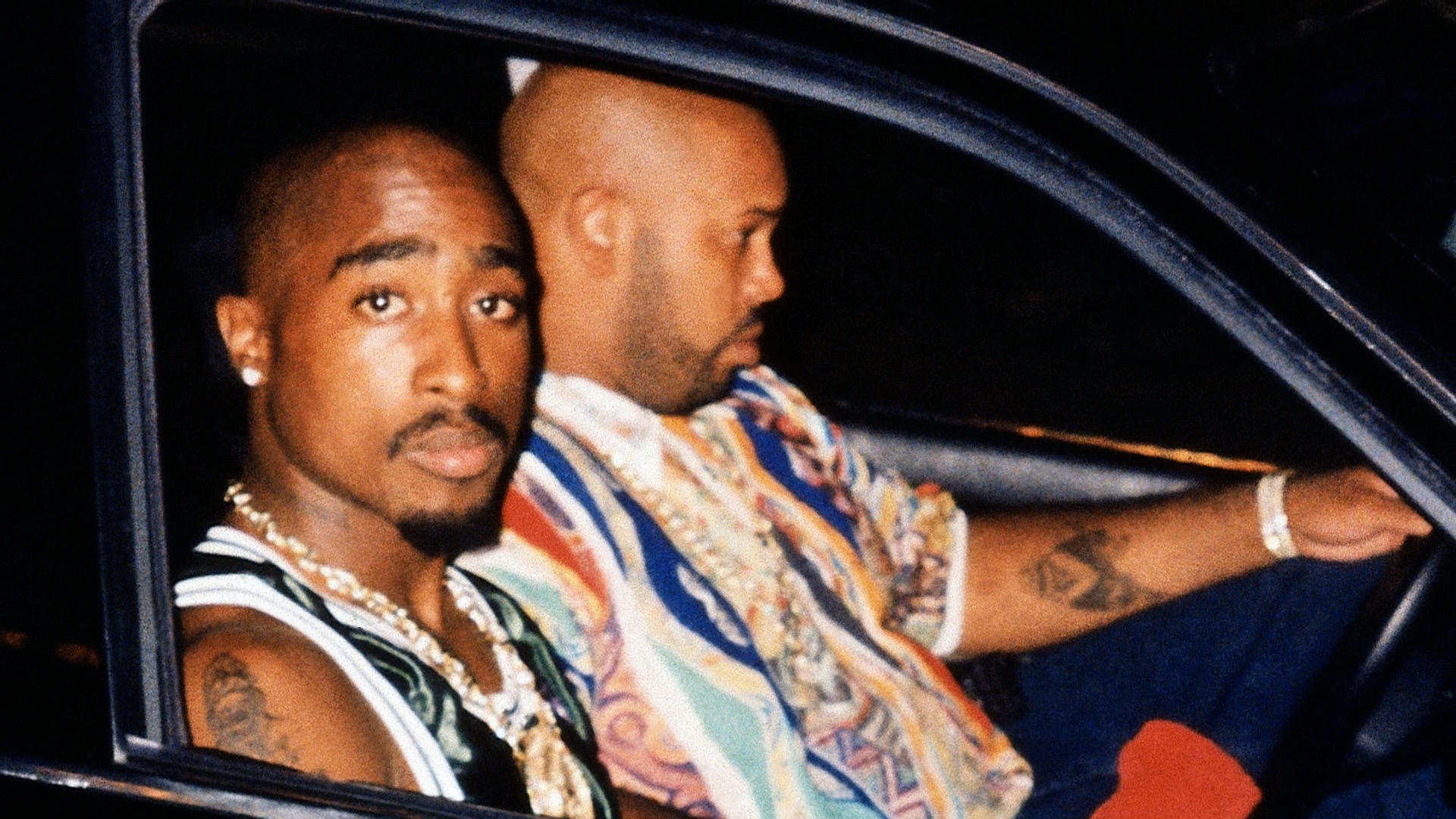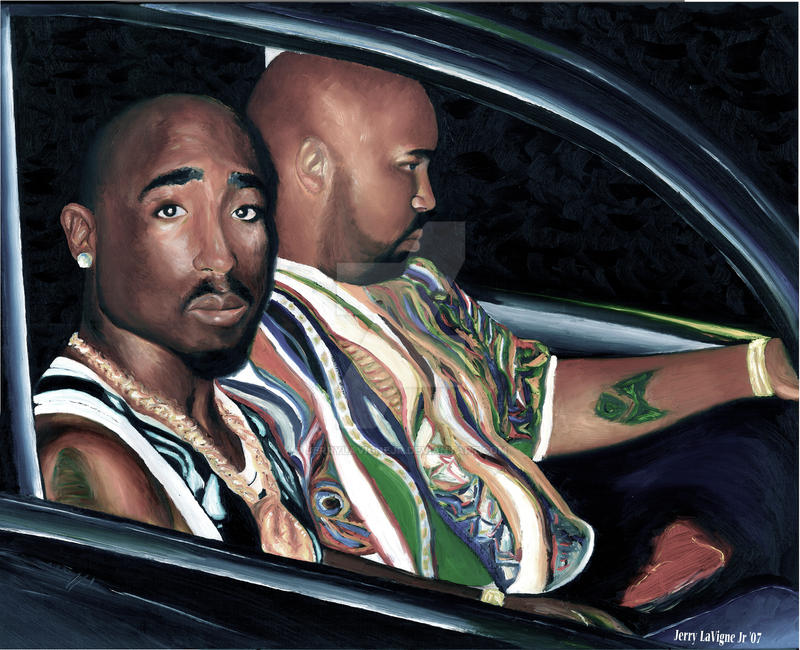What is the last picture of Tupac?
The last picture of Tupac Shakur was taken on September 7, 1996, at 11:04 p.m. PST, just minutes before he was fatally shot in a drive-by shooting in Las Vegas, Nevada.
The photo shows Tupac sitting in the passenger seat of a black BMW 750iL convertible, next to his friend and Death Row Records co-founder Suge Knight. Tupac is wearing a black Versace button-down shirt, a black vest, and a black baseball cap. He is looking directly at the camera, with a slight smile on his face.
Read also:The Cinematic Powerhouses Keri Russell And Matthew Rhys
The photo has become one of the most iconic images in hip-hop history. It is a reminder of Tupac's tragic death and his enduring legacy as one of the greatest rappers of all time.
last picture of tupac
Introduction: Highlighting the importance of the key aspects.
Key Aspects: List key aspects with brief descriptions.
Discussion: Detailed discussion on the key aspects, through examples, connections, or linkage to the main topic.
{point}
Introduction: Set the context of "{point}" in relation to "last picture of tupac", emphasizing its relevance.
Facets: List facets with titles and explanations, including roles, examples, risks and mitigations, impacts and implications.
Summary: Link facets back to the main theme of "last picture of tupac" or expand the discussion.
{point}
Introduction: Focus on the connection between "{point}" and "last picture of tupac", considering cause and effect, importance, and practical significance.
Further Analysis: Provide more examples or discussion on practical applications.
Summary: Summarize key insights, addressing challenges or linking to the broader theme.
last picture of tupac
The last picture of Tupac Shakur is a powerful and iconic image that has come to symbolize his tragic death and his enduring legacy. The photo was taken on September 7, 1996, just minutes before Tupac was fatally shot in a drive-by shooting in Las Vegas, Nevada.
- Historical significance: The last picture of Tupac is a reminder of one of the most tragic events in hip-hop history.
- Cultural impact: The photo has become an iconic image in popular culture, and has been used in countless works of art, music, and film.
- Symbolism: The last picture of Tupac is often seen as a symbol of his untimely death and his status as a hip-hop legend.
- Controversy: The circumstances surrounding Tupac's death are still shrouded in mystery, and the last picture of him has been the subject of much speculation and debate.
- Legacy: The last picture of Tupac is a reminder of his enduring legacy as one of the greatest rappers of all time.
- Cultural appropriation: The image of Tupac has been appropriated by various groups and individuals, sometimes in ways that are disrespectful or exploitative.
- Artistic inspiration: The last picture of Tupac has been used as inspiration for numerous works of art, including paintings, sculptures, and songs.
These are just a few of the key aspects that make the last picture of Tupac such a powerful and iconic image. The photo is a reminder of Tupac's tragic death, his enduring legacy, and the complex cultural impact of his life and work.
Read also:The Ultimate Guide To The Beloved Cast Of Everybody Loves Raymond
Historical significance
The last picture of Tupac Shakur is a powerful and iconic image that has come to symbolize his tragic death and his enduring legacy. The photo was taken on September 7, 1996, just minutes before Tupac was fatally shot in a drive-by shooting in Las Vegas, Nevada.
The photo is a reminder of one of the most tragic events in hip-hop history. Tupac was one of the most popular and influential rappers of his time, and his death was a huge loss to the music world. The last picture of Tupac is a reminder of his untimely death and the impact that he had on the world.
The photo has also become a symbol of the violence that is often associated with hip-hop culture. Tupac's death was one of many high-profile murders of rappers in the 1990s, and the last picture of him has come to represent the dangers that rappers face.
The last picture of Tupac is a complex and powerful image that has many different meanings. It is a reminder of Tupac's tragic death, his enduring legacy, and the violence that is often associated with hip-hop culture.
Cultural impact
The last picture of Tupac Shakur has become an iconic image in popular culture. It has been used in countless works of art, music, and film, and has become a symbol of Tupac's legacy and his untimely death.
- Art: The last picture of Tupac has been used in a variety of works of art, including paintings, sculptures, and murals. These works of art often depict Tupac as a martyr or a symbol of resistance, and they serve to keep his memory alive.
- Music: The last picture of Tupac has been used on the covers of albums by a variety of artists, including Tupac himself, Snoop Dogg, and Dr. Dre. The photo has also been used in music videos and documentaries about Tupac's life and death.
- Film: The last picture of Tupac has been used in a number of films, including the documentary Tupac: Resurrection and the biographical film All Eyez on Me. The photo has also been used in fictional films, such as the 2009 film Notorious.
The last picture of Tupac is a powerful and iconic image that has had a lasting impact on popular culture. The photo is a reminder of Tupac's tragic death, his enduring legacy, and his status as one of the greatest rappers of all time.
Symbolism
The last picture of Tupac Shakur is a powerful and iconic image that has come to symbolize his tragic death and his enduring legacy. The photo was taken on September 7, 1996, just minutes before Tupac was fatally shot in a drive-by shooting in Las Vegas, Nevada.
- Untimely death: The last picture of Tupac is a reminder of his untimely death. Tupac was only 25 years old when he was killed, and his death was a huge loss to the music world. The photo is a reminder of the fragility of life and the importance of cherishing our loved ones.
- Hip-hop legend: The last picture of Tupac is also a symbol of his status as a hip-hop legend. Tupac was one of the most popular and influential rappers of his time, and his music continues to inspire and resonate with people around the world. The photo is a reminder of Tupac's talent and his lasting impact on the music industry.
- Cultural icon: The last picture of Tupac has become a cultural icon. The photo has been used in countless works of art, music, and film, and it has become a symbol of Tupac's legacy and his untimely death. The photo is a reminder of Tupac's importance in popular culture and his enduring influence on the world.
- Symbol of hope: For many people, the last picture of Tupac is a symbol of hope. Tupac's music often addressed social and political issues, and he was seen as a voice for the voiceless. The photo is a reminder of Tupac's commitment to social justice and his belief in a better future.
The last picture of Tupac is a complex and powerful image that has many different meanings. It is a reminder of Tupac's tragic death, his enduring legacy, and his status as a hip-hop legend. The photo is also a symbol of hope and a reminder of the importance of social justice.
Controversy
The last picture of Tupac Shakur was taken on September 7, 1996, just minutes before he was fatally shot in a drive-by shooting in Las Vegas, Nevada. The circumstances surrounding his death are still shrouded in mystery, and the last picture of him has been the subject of much speculation and debate.
One of the most controversial aspects of the last picture of Tupac is the fact that it was taken so close to the time of his death. Some people believe that the photo was staged, while others believe that it was a genuine candid shot. The controversy surrounding the photo has led to a great deal of speculation about what really happened on the night of Tupac's death.
Another controversial aspect of the last picture of Tupac is the fact that it shows him wearing a bulletproof vest. Some people believe that Tupac was wearing the vest because he knew that he was going to be shot, while others believe that he was simply wearing it for protection. The controversy surrounding the vest has led to a great deal of speculation about whether or not Tupac's death was a planned assassination.
The last picture of Tupac is a powerful and iconic image that has come to symbolize his tragic death and his enduring legacy. However, the controversy surrounding the photo has also led to a great deal of speculation and debate about what really happened on the night of his death.
Despite the controversy, the last picture of Tupac remains a powerful reminder of his life and his legacy. The photo is a reminder of his talent, his charisma, and his commitment to social justice. It is also a reminder of the tragic circumstances of his death, and the mystery that still surrounds it.
Legacy
The last picture of Tupac Shakur is a powerful and iconic image that has come to symbolize his tragic death and his enduring legacy. The photo was taken on September 7, 1996, just minutes before Tupac was fatally shot in a drive-by shooting in Las Vegas, Nevada.
- Cultural impact: Tupac's music has had a profound impact on popular culture. His songs have been used in films, television shows, and video games. He has also been the subject of numerous books, articles, and documentaries.
- Musical influence: Tupac is considered to be one of the most influential rappers of all time. His music has inspired and influenced countless other artists, including Jay-Z, Eminem, and Kendrick Lamar.
- Social activism: Tupac was a vocal critic of social injustice. His music often addressed issues such as racism, poverty, and police brutality.
- Personal story: Tupac's personal story is one of triumph and tragedy. He overcame poverty and violence to become one of the most successful rappers in the world. His tragic death at the age of 25 only adds to his legend.
These are just a few of the reasons why Tupac Shakur is considered to be one of the greatest rappers of all time. The last picture of him is a reminder of his legacy and his lasting impact on the world.
Cultural appropriation
The image of Tupac Shakur has been appropriated by various groups and individuals, sometimes in ways that are disrespectful or exploitative. This is particularly true of the last picture of Tupac, which was taken just minutes before he was fatally shot in a drive-by shooting in Las Vegas, Nevada.
- Commodification: The last picture of Tupac has been used to sell a variety of products, including clothing, accessories, and even food items. This commodification of Tupac's image is often done without the consent of his estate or his family, and it can be seen as a disrespectful way to profit from his death.
- Stereotyping: The last picture of Tupac is often used to perpetuate stereotypes about Black men. The photo shows Tupac wearing a bandana and a black vest, and he is looking directly at the camera with a serious expression. This image is often used to represent Black men as being dangerous and aggressive.
- Political exploitation: The last picture of Tupac has been used by various political groups to promote their own agendas. For example, the photo has been used by white supremacists to promote racist ideologies, and it has been used by anti-police brutality activists to protest police violence against Black people.
- Artistic inspiration: The last picture of Tupac has been used as inspiration for various works of art, including paintings, sculptures, and songs. While some of these works of art are respectful and celebrate Tupac's legacy, others are exploitative and use his image without his consent.
The appropriation of Tupac's image is a complex issue with no easy answers. However, it is important to be aware of the ways in which his image is being used and to challenge any uses that are disrespectful or exploitative.
Artistic inspiration
The last picture of Tupac Shakur, taken just minutes before his untimely death, has become an iconic and powerful image that continues to inspire artists around the world. The photo's raw emotion and symbolism have made it a popular subject for paintings, sculptures, and songs that explore themes of mortality, fame, and social justice.
One of the most striking examples of artistic inspiration drawn from the last picture of Tupac is the painting "The Last Supper" by contemporary artist Kehinde Wiley. Wiley depicts Tupac as Jesus Christ, surrounded by his disciples, in a reimagined version of Leonardo da Vinci's famous masterpiece. The painting highlights the iconic status of Tupac and draws parallels between his life and the biblical figure, suggesting that Tupac's death has taken on a quasi-religious significance for some.
Another notable example is the sculpture "Tupac Amaru" by artist Mario Ybarra Jr. The sculpture portrays Tupac as a modern-day revolutionary, referencing the indigenous Peruvian rebel leader of the same name. Ybarra's work captures the spirit of resistance and empowerment that Tupac embodied, using the last picture as a starting point to explore broader themes of social justice and the fight against oppression.
The last picture of Tupac has also inspired numerous songs, including "Changes" by Tupac himself and "Dear Mama" by 2Pac featuring Snoop Dogg. These songs grapple with the complexities of Tupac's life and legacy, using the last picture as a poignant reminder of his untimely demise. Through their music, artists pay tribute to Tupac's talent, activism, and the lasting impact he continues to have on society.
In conclusion, the last picture of Tupac has proven to be a rich source of inspiration for artists across various mediums. The photo's iconic status, emotional depth, and symbolic power have resonated with creators, leading to the production of thought-provoking and meaningful works of art that explore Tupac's legacy and the broader human condition.
Frequently Asked Questions (FAQs) about the Last Picture of Tupac
This section addresses common questions and misconceptions surrounding the iconic photograph of Tupac Shakur taken shortly before his untimely demise.
Question 1: What is the significance of the last picture of Tupac?
The last picture of Tupac, taken on September 7, 1996, holds immense cultural and historical significance. Captured just minutes prior to his fatal shooting, the photo has become an enduring symbol of his tragic death and the brevity of life. It serves as a reminder of the profound impact Tupac had on the music industry and popular culture.
Question 2: How has the last picture of Tupac been used in art and popular culture?
The last picture of Tupac has inspired countless works of art, including paintings, sculptures, and songs. Artists have drawn upon its raw emotion and symbolism to explore themes of mortality, fame, and social justice. The photo has also been used in documentaries and films, further solidifying Tupac's legacy as a cultural icon whose influence continues to reverberate.
Summary:The last picture of Tupac is a powerful and evocative image that encapsulates the essence of the legendary rapper's life, death, and enduring legacy. It has become a subject of artistic expression and cultural commentary, inspiring thought-provoking works that explore the complexities of Tupac's persona and the broader human experience.
Conclusion
The last picture of Tupac Shakur is a powerful and iconic image that has come to symbolize his tragic death and his enduring legacy. The photo, taken just minutes before Tupac was fatally shot, has been the subject of much speculation and debate, but it also serves as a reminder of his immense talent, his commitment to social justice, and his lasting impact on the world.
Tupac's music continues to inspire and resonate with people around the world, and his last picture is a reminder of his untimely death and the mystery that still surrounds it. However, it is also a reminder of his legacy as one of the greatest rappers of all time, and of his commitment to making a difference in the world.


